 W
WAgamidae is a family of over 300 species of iguanian lizards indigenous to Africa, Asia, Australia, and a few in Southern Europe. Many species are commonly called dragons or dragon lizards.
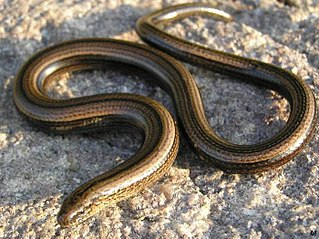 W
WAnguidae refers to a large and diverse family of lizards native to the Northern Hemisphere. Common characteristics of this group include a reduced supratemporal arch, striations on the medial faces of tooth crowns, osteoderms, and a lateral fold in the skin of most taxa. The group includes the slowworms, glass lizards, and alligator lizards, among others. The family is divided into three subfamilies, and contains about 100 species in 10 genera.
 W
WThe family Anniellidae, known as American legless lizards, contains six species in a single genus Anniella: A. pulchra, the California legless lizard, the rare A. geronimensis, Baja California legless lizard, and four more discovered in 2013.
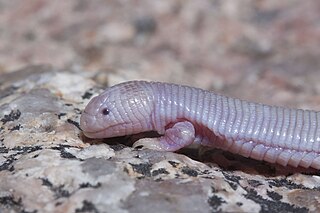 W
WBipedidae is a family of amphisbaenians that includes the extant genus Bipes represented by three species from Mexico and the extinct genus Anniealexandria represented by one species that lived in what is now Wyoming during the earliest Eocene around 55 million years ago. Phylogenetic analysis indicates that Bipedidae is most closely related to the family Blanidae, which includes the living genus Blanus.
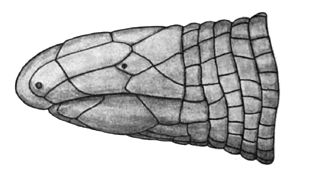 W
WCadea is a genus of amphisbaenians, commonly known as Cuban keel-headed worm lizards. Two species are placed in this genus. Both species are endemic to Cuba.
 W
WThe Carphodactylidae, informally known as the southern padless geckos, are a family of geckos, lizards in the infraorder Gekkota. The family consists of 32 described species in 7 genera, all of which are endemic to Australia. They belong to the superfamily Pygopodoidea, an ancient group of east Gondwanan geckos now only found in Australasia. Despite their well-developed limbs, molecular phylogenies have demonstrated that Carphodactylidae is the sister group to Pygopodidae, a highly specialized family of legless lizards.
 W
WChameleons or chamaeleons are a distinctive and highly specialized clade of Old World lizards with 202 species described as of June 2015. These species come in a range of colours, and many species have the ability to change colour.
 W
WCordylidae is a family of small to medium-sized lizards that occur in southern and eastern Africa. They are commonly known as girdled lizards, spinytail lizards, or girdle-tail lizards.
 W
WCorytophanidae is a family of iguanian lizards, also called casquehead lizards or helmeted lizards, endemic to the New World. Nine species of casquehead lizards from three genera are recognized.
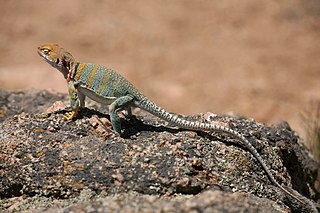 W
WThe Crotaphytidae, or collared lizards, are a family of desert-dwelling reptiles native to the Southwestern United States and northern Mexico. Alternatively they are recognized as a subfamily, Crotaphytinae. They are very fast-moving animals, with long limbs and tails, and are carnivorous, feeding mainly on insects and smaller lizards.
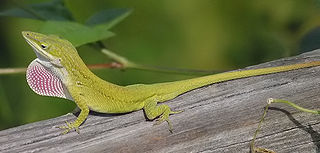 W
WDactyloidae are a family of lizards commonly known as anoles and native to warmer parts of the Americas, ranging from southeastern United States to Paraguay. Instead of treating it as a family, some authorities prefer to treat it as a subfamily, Dactyloidae, of the family Iguanidae. In the past they were included in the family Polychrotidae together with Polychrus, but the latter genus is not closely related to the true anoles.
 W
WDibamidae or blind skinks is a family of lizards characterized by their elongated cylindrical body and an apparent lack of limbs. Female dibamids are entirely limbless and the males retain small flap-like hind limbs, which they use to grip their partner during mating. They have a rigidly fused skull, lack pterygoid teeth and external ears. Their eyes are greatly reduced, and covered with a scale.
 W
WThe Diplodactylidae are a family in the suborder Gekkota (geckos), with over 150 species in 25 genera. These geckos occur in Australia, New Zealand, and New Caledonia. Diplodactylids are the most ecologically diverse and widespread family of geckos in both Australia and New Caledonia, and are the only family of geckos found in New Zealand. Three diplodactylid genera have recently been split into multiple new genera
 W
WThe Eublepharidae are a family of geckos (Gekkota) consisting of 43 described species in six genera. They occur in Asia, Africa and North America. Eublepharid geckos lack adhesive toepads and, unlike other geckos, have movable eyelids, thus commonly called eyelid geckos. Leopard geckos and African fat-tailed geckos are popular pet lizards.
 W
WGekkonidae is the largest family of geckos, containing over 950 described species in 64 genera. Members of the Gekkonidae comprise many of the most widespread gecko species, including house geckos (Hemidactylus), tokay geckos (Gekko), day geckos (Phelsuma), mourning geckos (Lepidodactylus) and dtellas (Gehyra). Gekkonid geckos occur globally and are particularly species-rich in tropical areas.
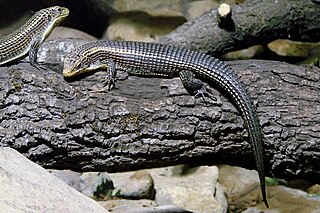 W
WThe Gerrhosauridae are a family of lizards native to Africa and Madagascar.
 W
WGymnophthalmidae is a family of lizards with at least 250 species, sometimes known commonly as spectacled lizards or microteiids. They are called "spectacled" because of their transparent lower eyelids, which allow them to still see with closed eyes. As in most lizards, except geckos, these eyelids are movable. The Alopoglossidae have been recently moved from this family.
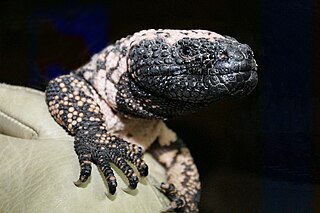 W
WHeloderma is a genus of toxicoferan lizards that contains five species, all of which are venomous. It is the only extant genus of the family Helodermatidae.
 W
WHoplocercidae are a family of lizards native to the tropical forests, woodlands and savanna-like habitats of Central and South America. Alternatively they are recognized as a subfamily, Hoplocercinae. 20 species in three genera are described.
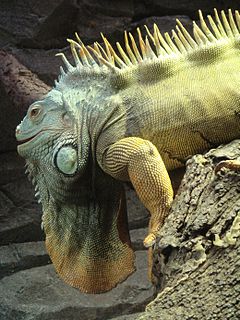 W
WThe Iguanidae are a family of lizards composed of iguanas and related species which includes species such as the green iguana, the Lesser Antillean iguana and the marine iguana.
 W
WThe Lacertidae are the family of the wall lizards, true lizards, or sometimes simply lacertas, which are native to Afro-Eurasia. It is a diverse family with at least 300 species in 39 genera. They represent the dominant group of reptiles found in Europe. The group includes the genus Lacerta, which contains some of the most commonly seen lizard species in Europe.
 W
WThe earless monitor lizard is a semiaquatic, brown lizard native to the Southeast Asian island of Borneo. It is the only living species in the family Lanthanotidae and it is related to the true monitor lizards.
 W
WLeiocephalidae, also known as the curlytail lizards or curly-tailed lizards, is a family of iguanian lizards restricted to the West Indies. One of the defining features of these lizards is that their tail often curls over. They were previously regarded as members of the subfamily Leiocephalinae within the family Tropiduridae. There are presently 29 known species, all in the genus Leiocephalus.
 W
WLeiosauridae is a family of iguanian lizards containing six genera and 34 species. The family is endemic to Central America and South America.
 W
WLiolaemidae are a family of iguanian lizards. They are traditionally included in the Iguanidae as subfamily Liolaeminae, which some more recent authors prefer to delimit in a more restricted way. A common name for this group is liolaemids. Liolaemidae are typically herbivores, who have a high diet in fruit. Because of this special diet, Liolaemidae have a larger small intestine when compared to other similar omnivorous and insectivorous lizards.
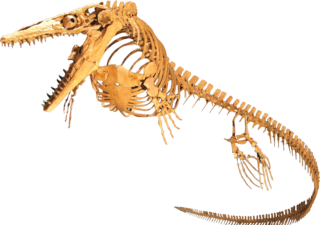 W
WMosasaurs comprise a group of extinct, large marine reptiles from the Late Cretaceous. Their first fossil remains were discovered in a limestone quarry at Maastricht on the Meuse in 1764. They belong to the order Squamata, which includes lizards and snakes.
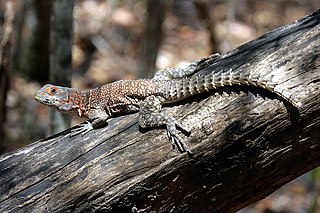 W
WThe Opluridae, or Madagascan iguanas, are a family of moderately sized lizards native to Madagascar and Grande Comore. There are eight species in two genera, with most of the species being in Oplurus. The family includes species that live amongst rocks, some that live in trees, and two that prefer sandy habitats. All of the species lay eggs, and have teeth that resemble those of the true iguanas. A study was done to identify the foraging mode of the oplurus species. The species was highly favored to be ambush foragers due to their low movement per min (MPM) and percent time spent moving (PTM) During rainy and dry seasons of the jardin botanique A of Ampijoroa forest. the two genera are easily distinguished. The smaller two Chalarodon species have a dorsal crest, particularly distinct in males, and has a smoother tail covered in similarly sized scales. Genus Oplurus has large segmented spiny scales, and no dorsal crest along the spine.
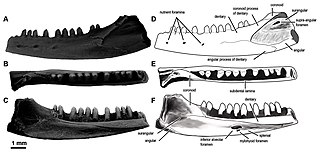 W
WParamacellodidae is an extinct family of lizards that first appeared in the Middle Jurassic around 170 million years ago (Ma) and became extinct at the end of the Cretaceous around 66 Ma. It was one of the earliest groups of lizards to have undergone an evolutionary radiation, with members found across the supercontinent Laurasia. The phylogenetic relationships and constituent species of Paramacellodidae are uncertain. Many studies regard them to be scincomorphs, a large group that includes skinks and their closest extinct relatives, and possibly also to Cordyoidea, a group that includes spinytail lizards and relatives. Like modern skinks, paramacelloidids had rectangular bony plates called osteoderms covering most of their bodies, including their backs, undersides, and tails. They also had short and robust limbs. Paramacellodids are distinguished from other lizards by the combination two traits in their dentition, the teeth are labiolingually expanded at their bases, and the tooth apices are lingually concave.
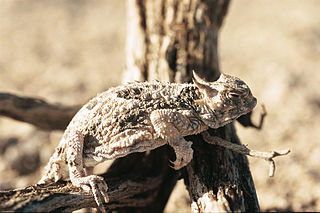 W
WThe Phrynosomatidae are a diverse family of lizards, sometimes classified as a subfamily (Phrynosomatinae), found from Panama to the extreme south of Canada. Many members of the group are adapted to life in hot, sandy deserts, although the spiny lizards prefer rocky deserts or even relatively moist forest edges, and the short-horned lizard lives in prairie or sagebrush environments. The group includes both egg-laying and viviparous species, with the latter being more common in species living at high elevations.
 W
WThe Phyllodactylidae are a family of geckos (Gekkota) consisting of over 150 species in 10 genera, distributed throughout the New World, North Africa, Europe and the Middle East. The family was first delineated based on a molecular phylogenetic analysis in 2008, and all members possess a unique single codon deletion in the phosducin (PDC) gene. The phyllodactylid genus Bogertia has been recently synonymized with Phyllopezus.
 W
WThe Polychrotidae family of iguanian lizards contains the living genus Polychrus and the extinct genus Afairiguana. The family Polychrotidae was once thought to encompass all anoles, including those in the genus Anolis. Studies of the evolutionary relationships of anoles based on molecular information has shown that Polychrus is not closely related to Anolis, but instead closer to Hoplocercidae. It is therefore not part of Dactyloidae and instead is treated as the family, Polychrotidae.
 W
WPygopodidae, commonly known as legless lizards, snake-lizards, or flap-footed lizards, is a family of squamates with reduced or absent limbs, and are a type of gecko. At least 35 species are placed in two subfamilies and eight genera. They have unusually long, slender bodies, giving them a strong resemblance to snakes. Like snakes and most geckos, they have no eyelids, but unlike snakes, they have external ear holes and flat, unforked tongues. They are native to Australia and New Guinea.
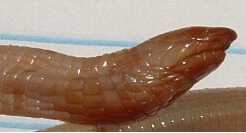 W
WRhineuridae is a family of amphisbaenians that includes one living genus and species, Rhineura floridana, as well as many extinct species belonging to both Rhineura and several extinct genera. The living R. floridana is found only in Florida no further north than the panhandle, but extinct species ranged across North America, some occurring as far west as Oregon. The family has a fossil record stretching back 60 million years to the Paleocene and was most diverse in the continental interior during the Eocene and Oligocene.
 W
WSkinks are lizards belonging to the family Scincidae, a family in the infraorder Scincomorpha. With more than 1,500 described species across 100 different taxonomic genera, the family Scincidae is one of the most diverse families of lizards. Skinks are characterized by their smaller legs in comparison to typical lizards and are mostly found in different habitats except arctic and subarctic regions.
 W
WThe Sphaerodactylidae are a family of geckos (Gekkota) distributed in North America, Central America, South America, and the Caribbean, as well as in Southern Europe, North Africa, the Middle East, and into Central Asia. The family contains 12 genera and over 200 species.
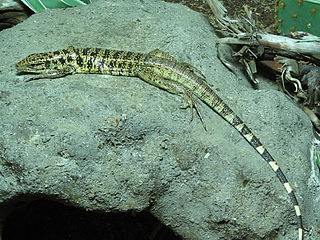 W
WTeiidae is a family of autarchoglossan lizards native to the Americas. Members of this family are generally known as whiptails or racerunners; however, tegus also belong to this family. Teiidae is sister to the Gymnopthalmidae, and both families comprise the Teiioidea. The Teiidae includes several parthenogenic species – a mode of clonal reproduction. Presently, the Teiidae consists of approximately 150 species in eighteen genera.
 W
WTrogonophidae is a small family of amphisbaenians, containing five species in four genera.
 W
WThe Tropiduridae are a family of iguanid lizards. The family is sometimes considered a subfamily, Tropidurinae. The subfamily is native to South America, including the islands of Trinidad and the Galápagos. Commonly known as neotropical ground lizards, most are ground-dwelling animals, and the subfamily includes some lizards adapted to relatively cold climates, including those of the Andes mountains and Tierra del Fuego. Several species give birth to live young.
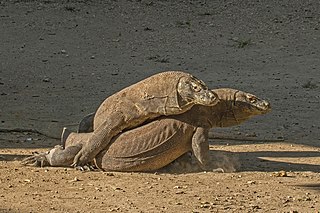 W
WThe Varanidae are a family of lizards in the superfamily Varanoidea within the Anguimorpha group. The family, a group of carnivorous and frugivorous lizards, includes the living genus Varanus and a number of extinct genera. Varanus includes the Komodo dragon, crocodile monitor, savannah monitor, the goannas of Australia and Southeast Asia, and various other species with a similarly distinctive appearance. Their closest living relatives are the anguid and helodermatid lizards.
 W
WNight lizards are a group of small scincomorph lizards, averaging from less than 4 cm (1.6 in) to over 12 cm (4.7 in) snout–vent length. Most species are viviparous (live-bearing), with the exception of those in the genus Cricosaura. The family has only three living genera, with approximately 34 living species. The genera are divided by geographic range: Xantusia in southwestern North America and Baja California, Cricosaura in Cuba, and Lepidophyma, the most populous night lizard genus, in Central America. Three fossil genera are also known: Catactegenys, Palepidophyma, Palaeoxantusia.
 W
WXenosauridae is a family of anguimorph lizards whose only living representative is the genus Xenosaurus, which is native to Central America. Xenosauridae also includes the extinct genera Exostinus and Restes. Also known as knob-scaled lizards, they have rounded, bumpy scales and osteoderms. Most living species prefer humid, rocky habitats, although they are widespread within their native regions, with some inhabiting semi-arid scrub environments. They are carnivorous or insectivorous, and give birth to live young.